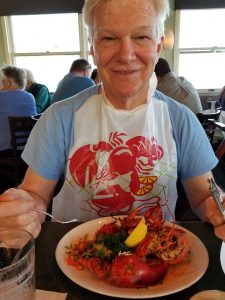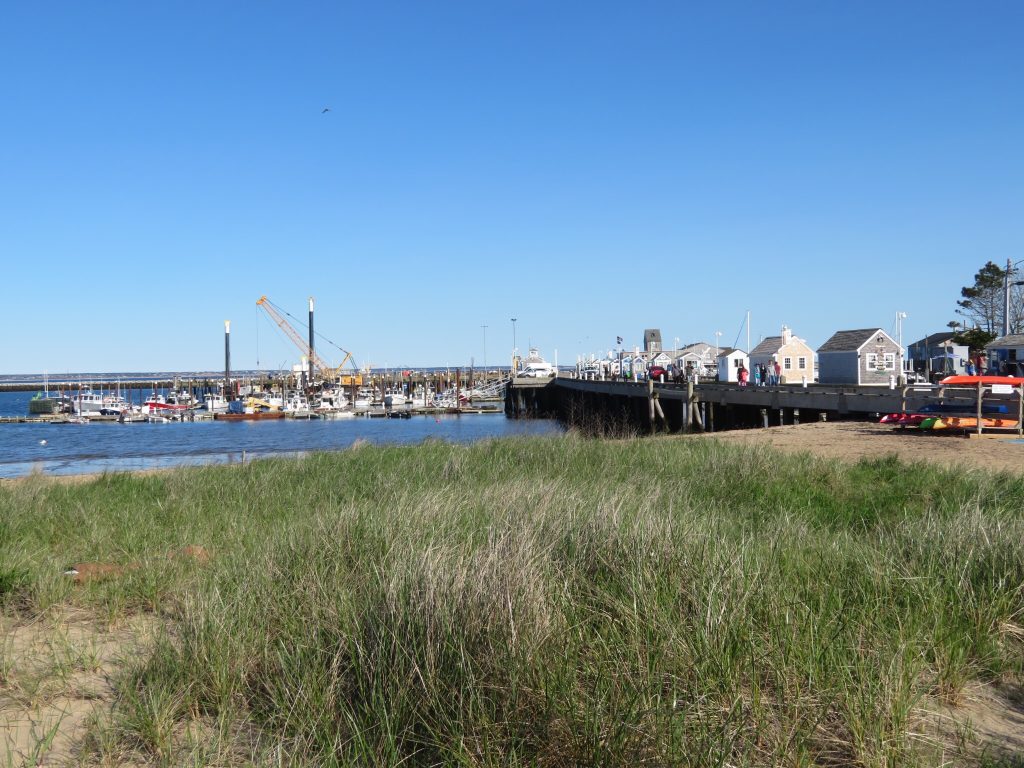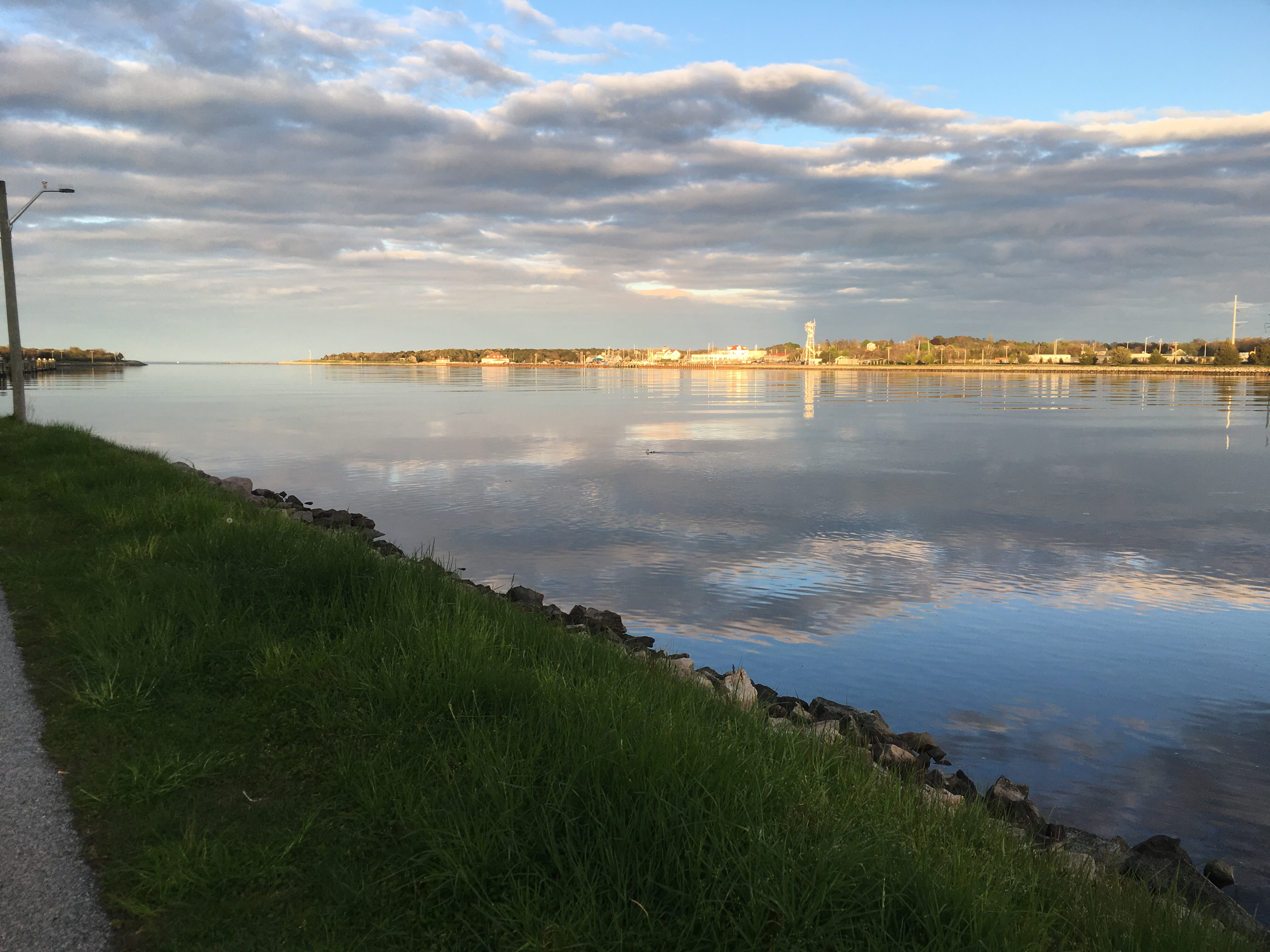What a lovely drive we had through southern Connecticut, Rhode Island and Massachusetts, making our way to Scusset Beach State Reservation (state park) on Cape Cod Bay. This was one of the easiest state parks we’ve tried to get into—no windy roads or flooded streets. Located just a little way off the freeway, but with a feeling of being away from it all. After the busy-ness of Jersey City and New York City, this was a peaceful place to land for a few days.
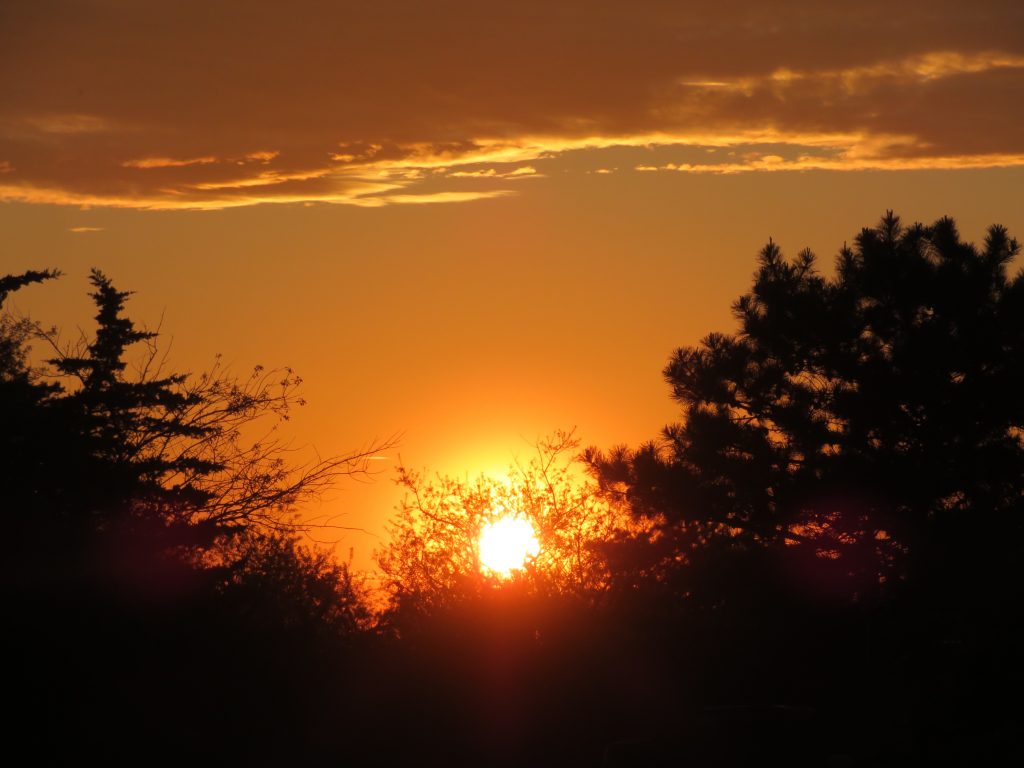

There is so much to do and see in this part of the country, so we know we just scratched the surface, but here’s what we enjoyed:
Day ½–After recovering from our long drive, we got out our bikes for the first time on this trip and jumped onto the bike path next to the Cape Cod Canal. We enjoyed a brisk ride along this man-made canal (built early in the 1900s) that ends at Cape Cod Bay. Our campground was right next to both of these bodies of water.
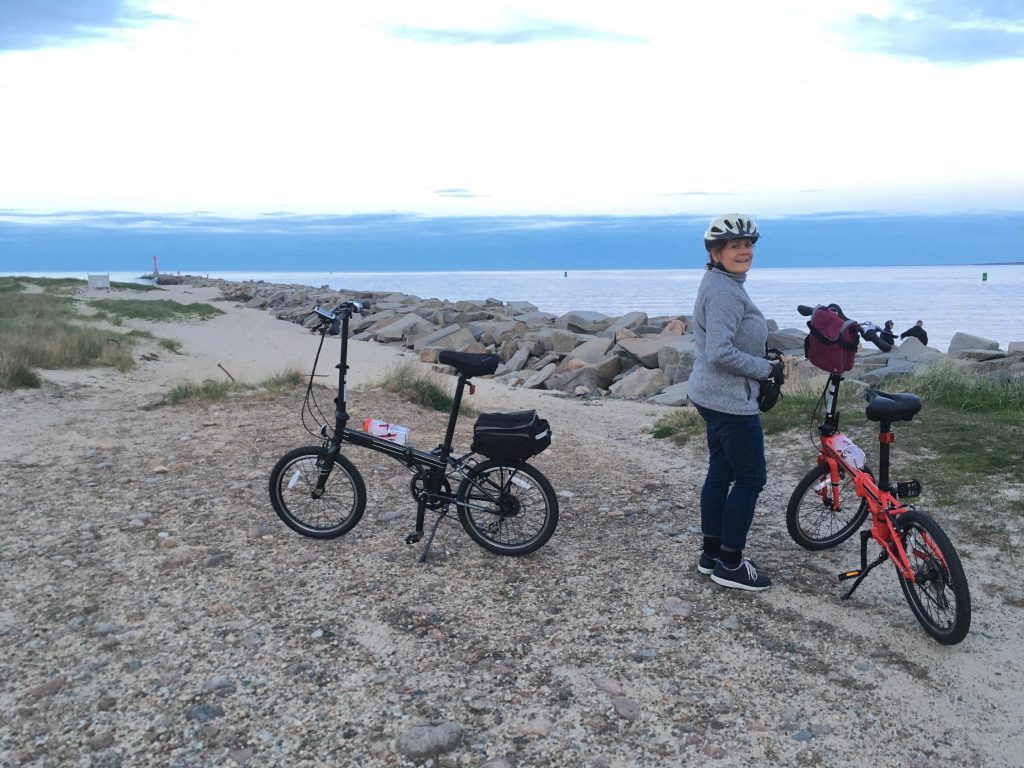
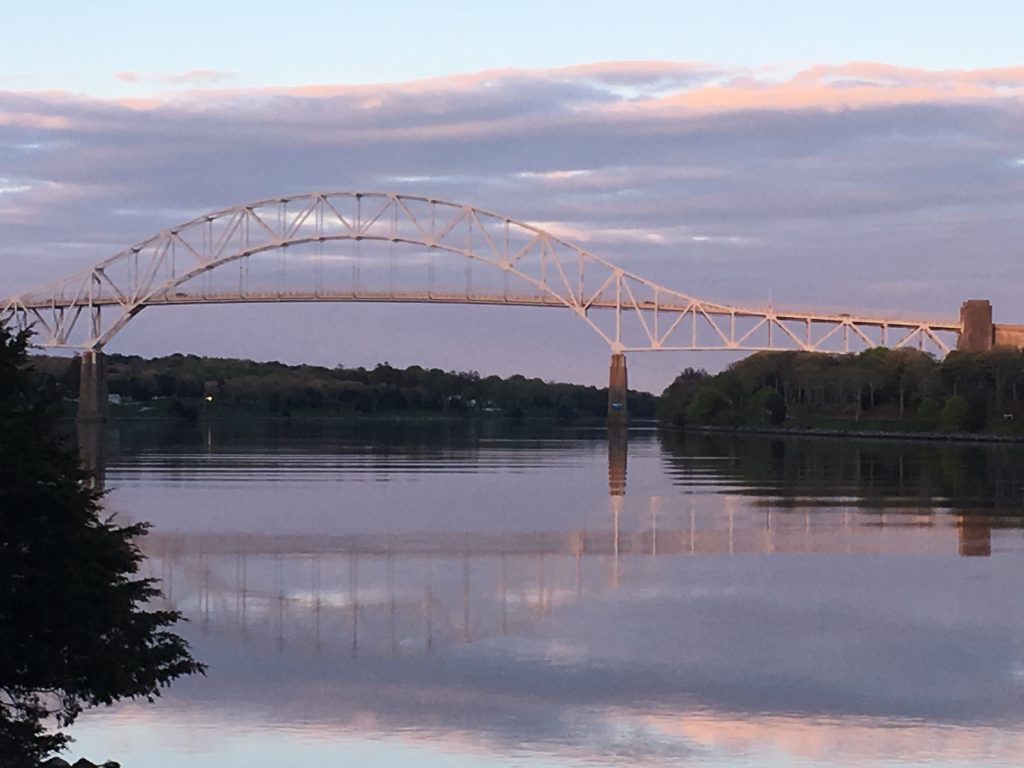
Day 1—Newport, Rhode Island. This is where the wealthy industrialists of New York City would head for the summer when things got too hot in the city (around the turn of the 20th Century). Their “summer cottages” were elaborate mansions, both inside and out, exemplifying the “gilded age” that Mark Twain coined.
While there are many mansions to tour, we selected the 70-room “Breakers,” summer home of the Vanderbilts (Cornelius Vanderbilt II), and were treated to a very well-done self-guided audio tour of a beautifully-preserved 1895 estate. The tour had just enough detail to let you know what had gone on in that particular room or what the inspiration for the room had been without overwhelming you with too much information. You can walk the Cliff Walk to enjoy more of the coastline, but once again, the rain nixed that plan.
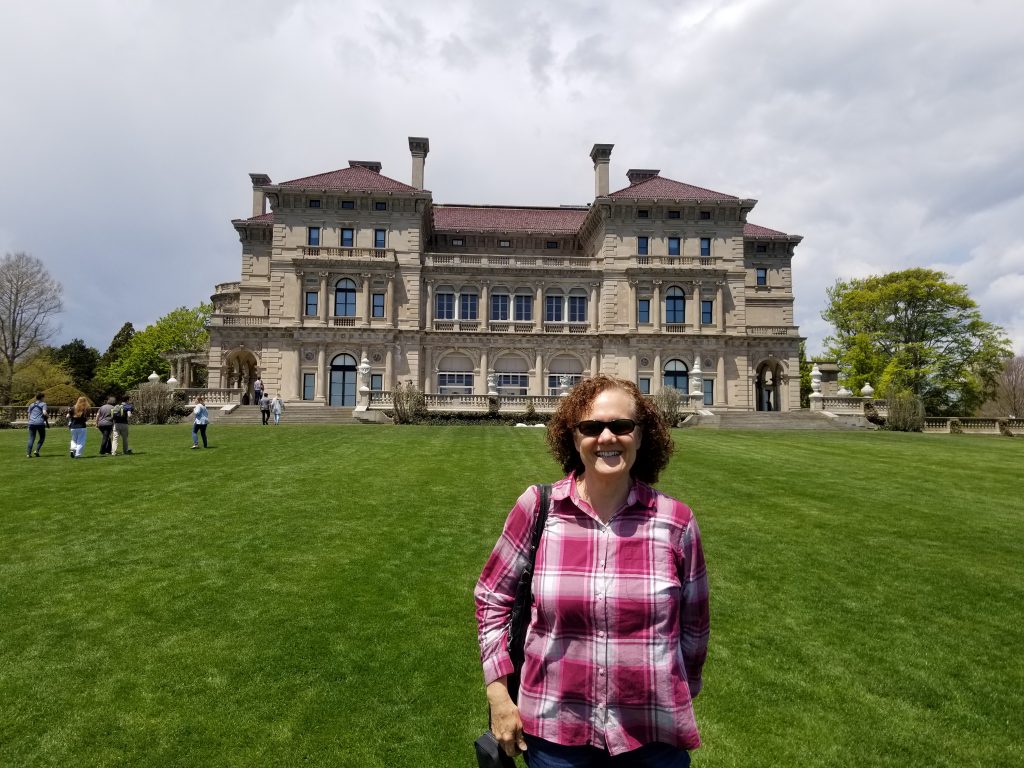
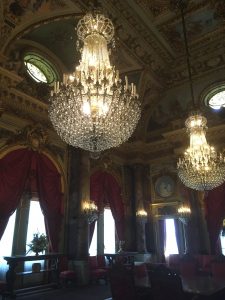
On to New Bedford, Massachusetts, the center of the 19th century American whaling industry. A small historical park operated by the National Park Service displayed interesting artifacts, and the New Bedford Whaling Museum added even more—whale skeletons, scrimshaw, a half-scale model of a whaling ship, and stories of the New Bedford abolitionist movement and underground railroad (we didn’t know that Frederick Douglass lived for many years in New Bedford, as did many formerly-enslaved African Americans).
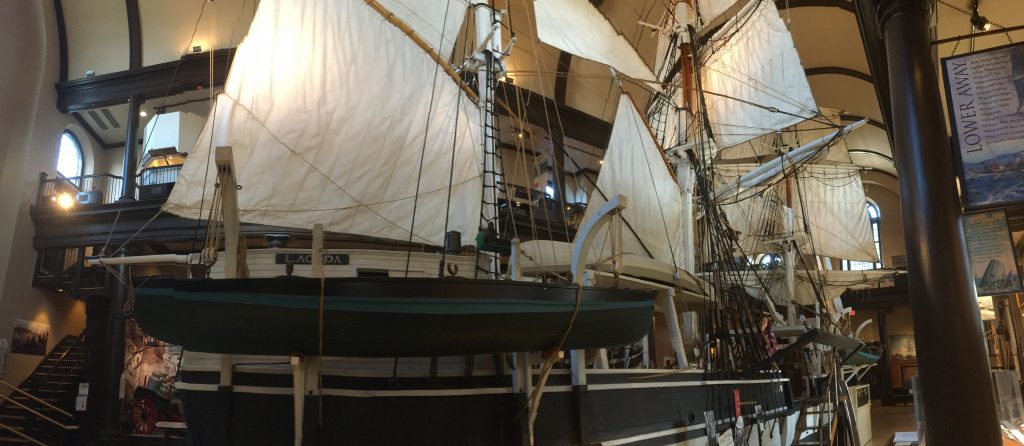
Day 2—More history as we explored Plimoth Plantation, a re-creation of the original Pilgrims’ homes and buildings as they would have appeared around 1621-1627. Native Americans and actors in period costumes provide wonderful details of life in the 17th century from various perspectives. We learned how wool is spun into cloth and what it takes to milk a goat!
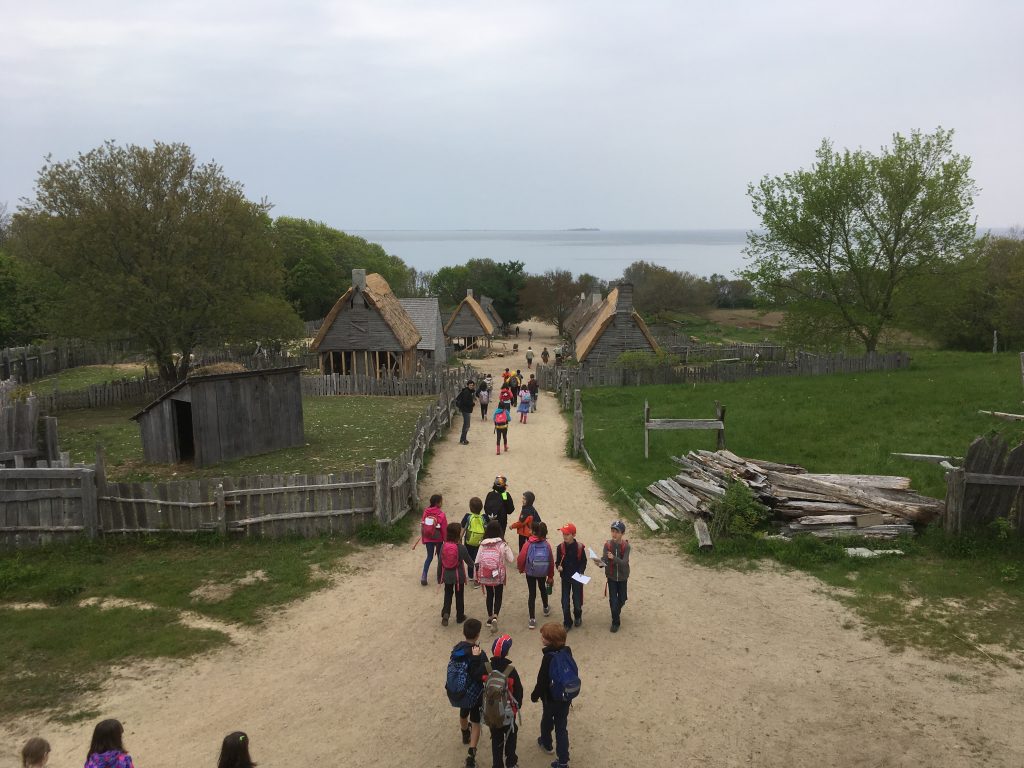
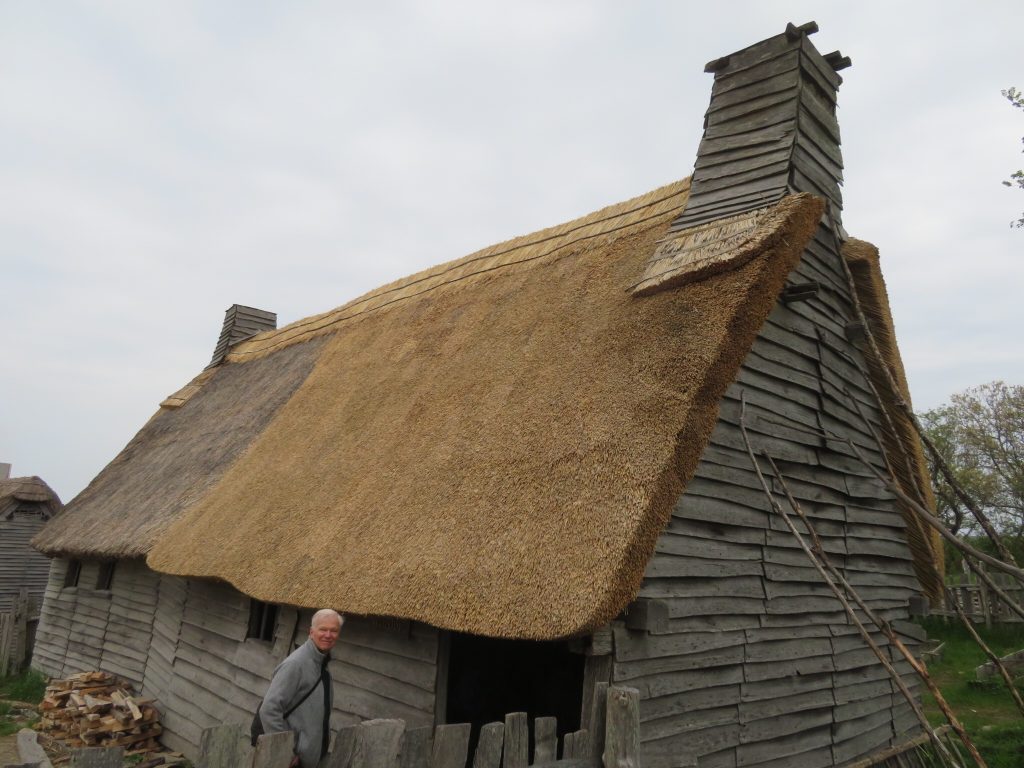
We also visited the town of Plymouth, where the Pilgrims first exited the Mayflower after signing the Mayflower Compact at the end of Cape Cod Bay in what is now Provincetown. Plymouth Rock is in the town of Plymouth, carefully carved with the year 1620, though there is no evidence that the Pilgrims landed at the rock or ever saw it. Another elementary school myth shattered!
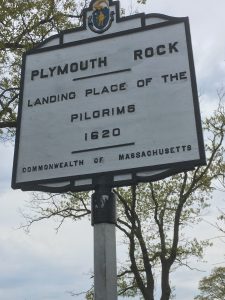
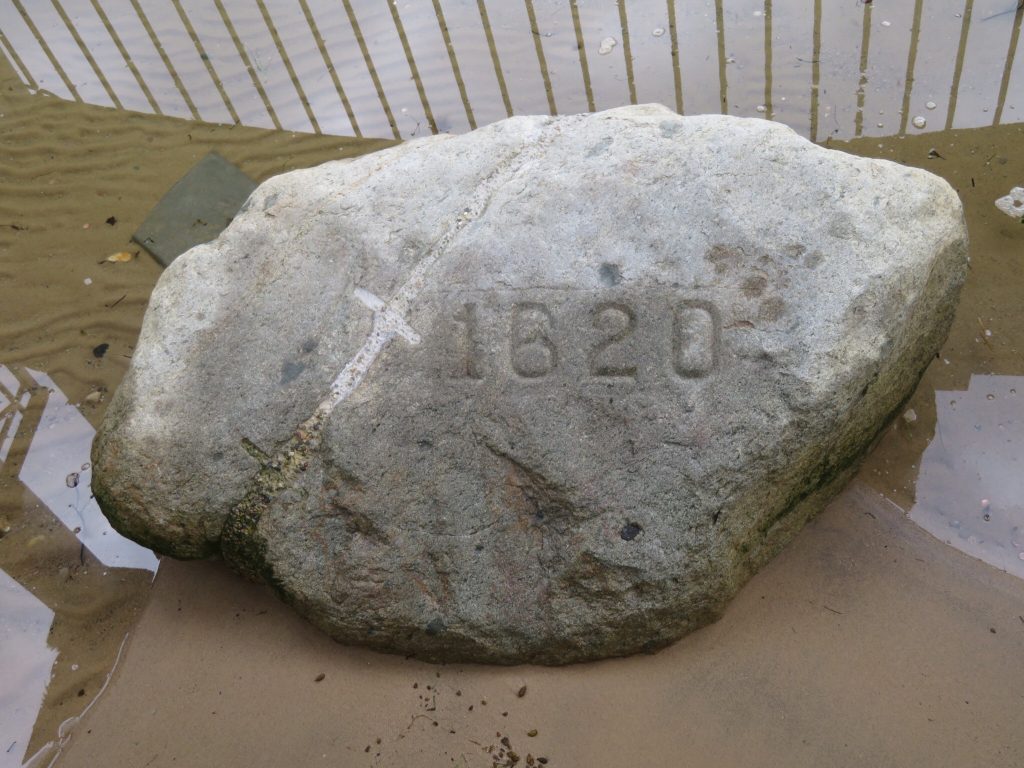
Lunch with our good friend (and Cindy’s former boss) Donna gave us a nice break from the rain. We are on a hunt to eat great seafood along the Eastern Seaboard, so Haddad’s Ocean Café in Marshfield, Massachusetts, definitely fit the bill.
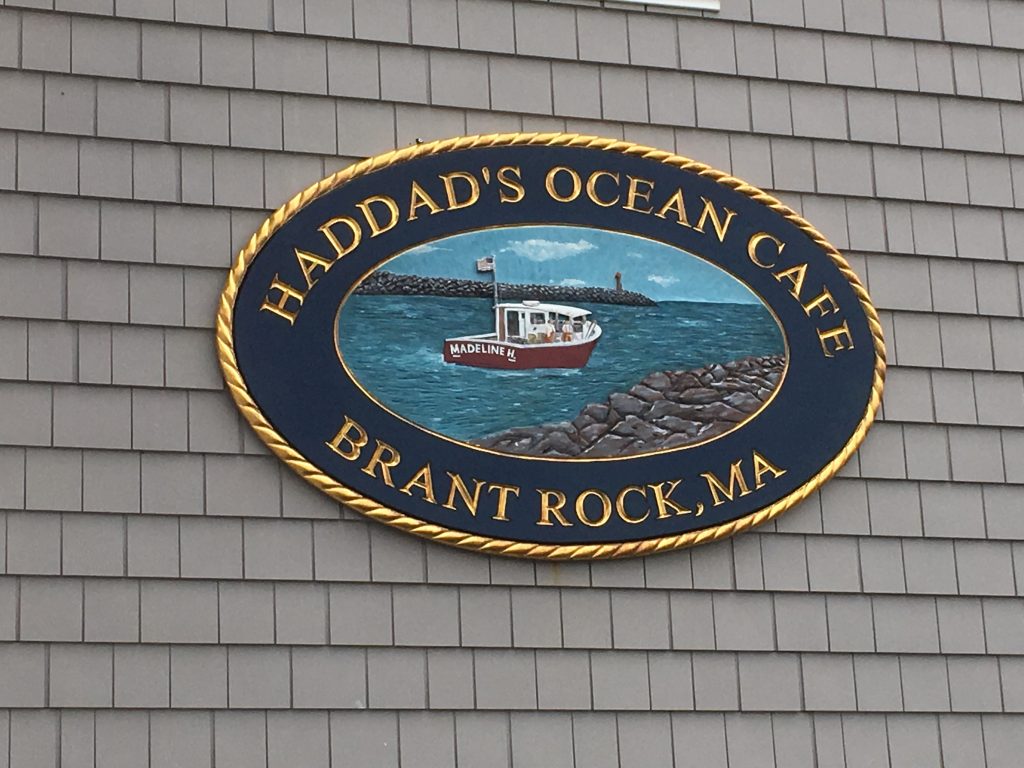
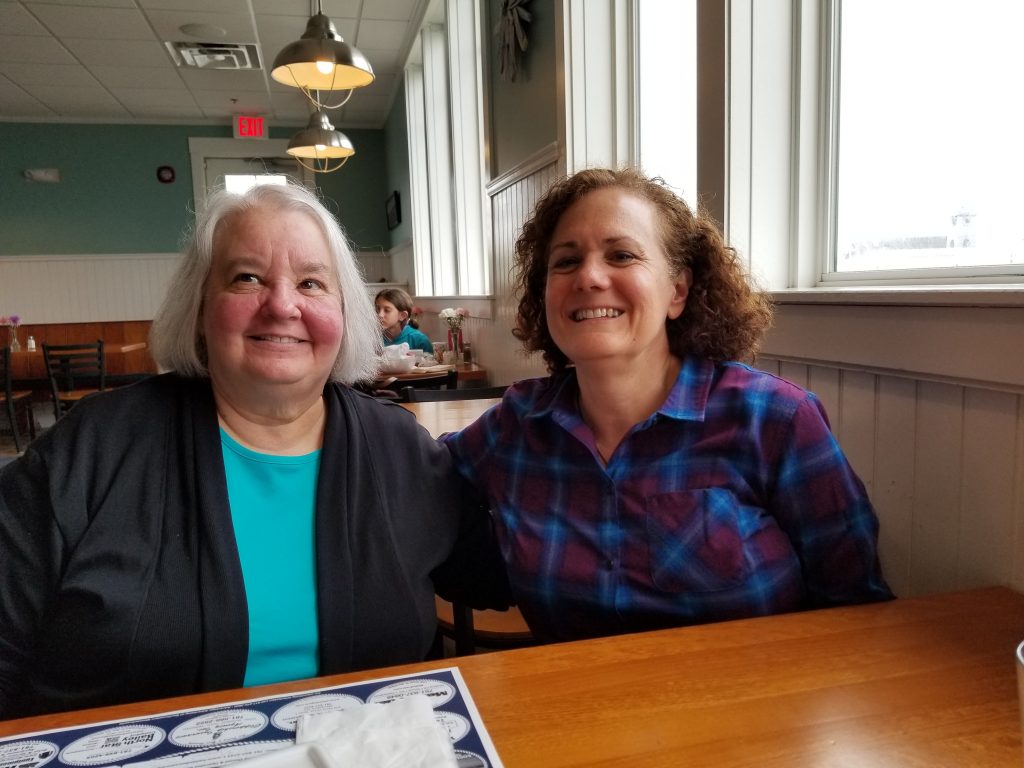
Driving north to the city of Quincy, MA, we got to see the grounds and home of John and Abigail Adams, our second president and first lady.

After tackling the subway and commuter train in New York City, we figured we could handle the T to Boston. We hopped on the T in Quincy, transferred at Park Street, and exited near Fenway Park, following the crowd to the stadium. At Fenway we watched the Red Sox lose to the Houston Astros, but enjoyed being in one of America’s oldest baseball stadiums (1912), singing “Sweet Caroline” and “Take Me Out to the Ball Game” with thousands of fans. Very fun!
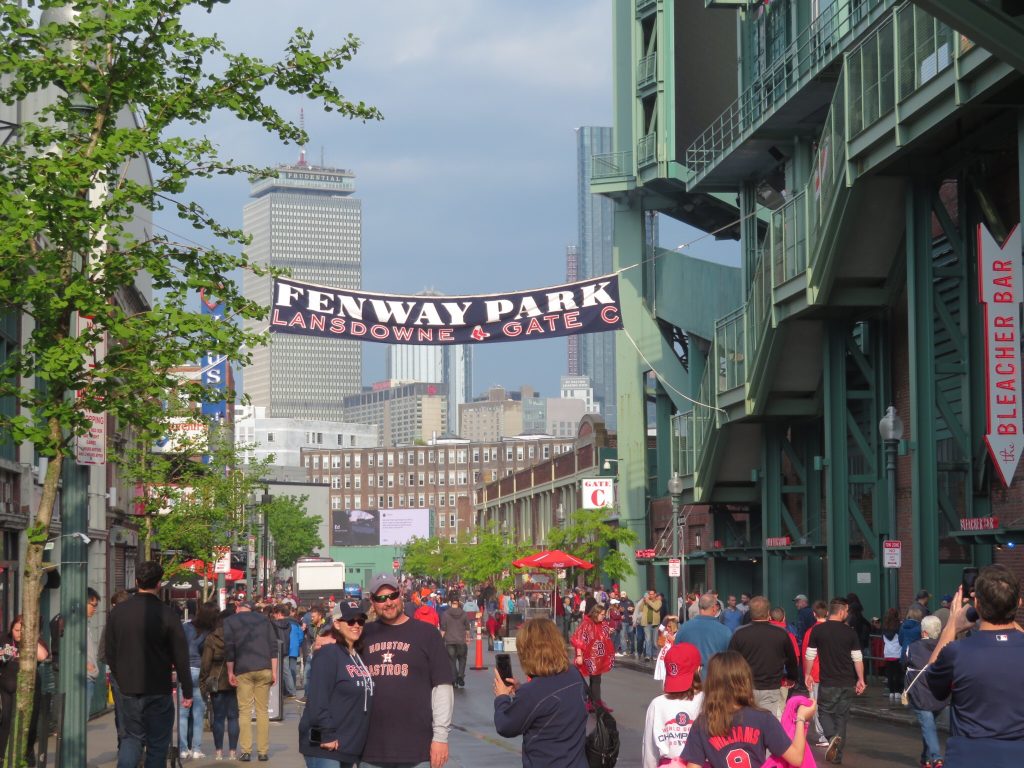
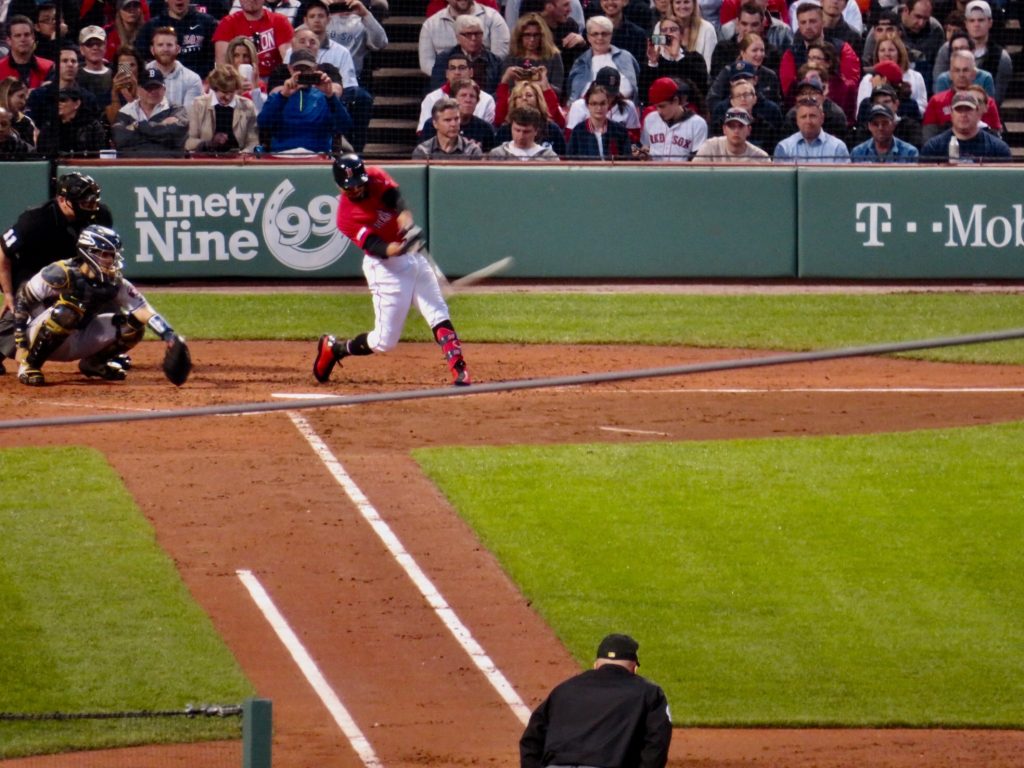
Day 3—After a late night successfully getting home from Fenway Park and the T subway, we left the RV early the next morning to drive to Hyannis and catch the ferry to the island of Nantucket. We took our bikes with us (each bike had its own ferry ticket) and rode 18 miles around a good portion of the island. Spring was just beginning to arrive in Nantucket, so many of the trees were just starting to get their buds.
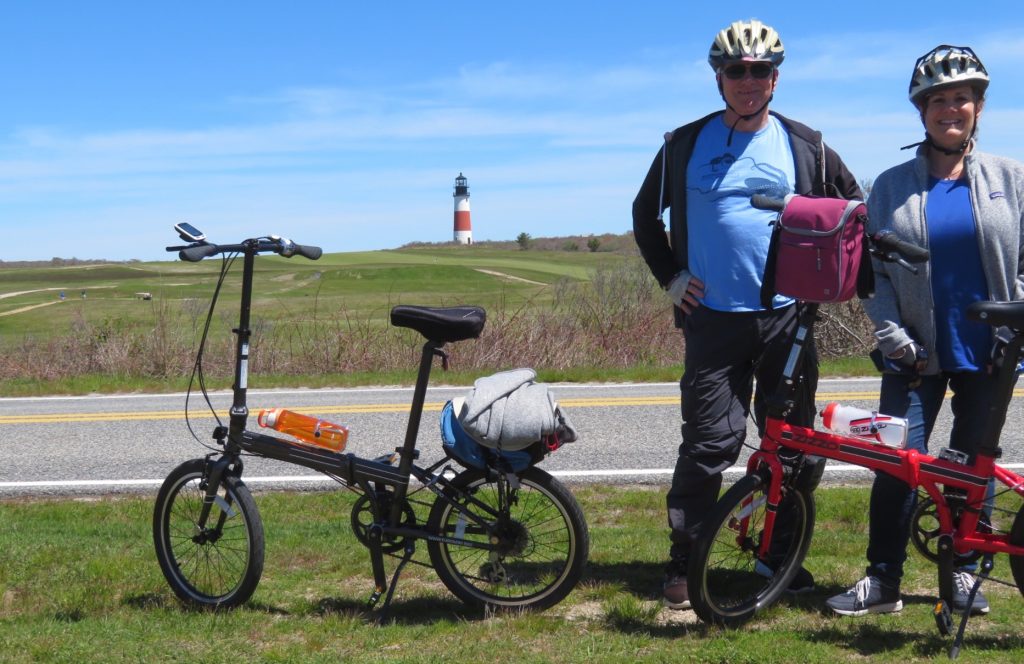
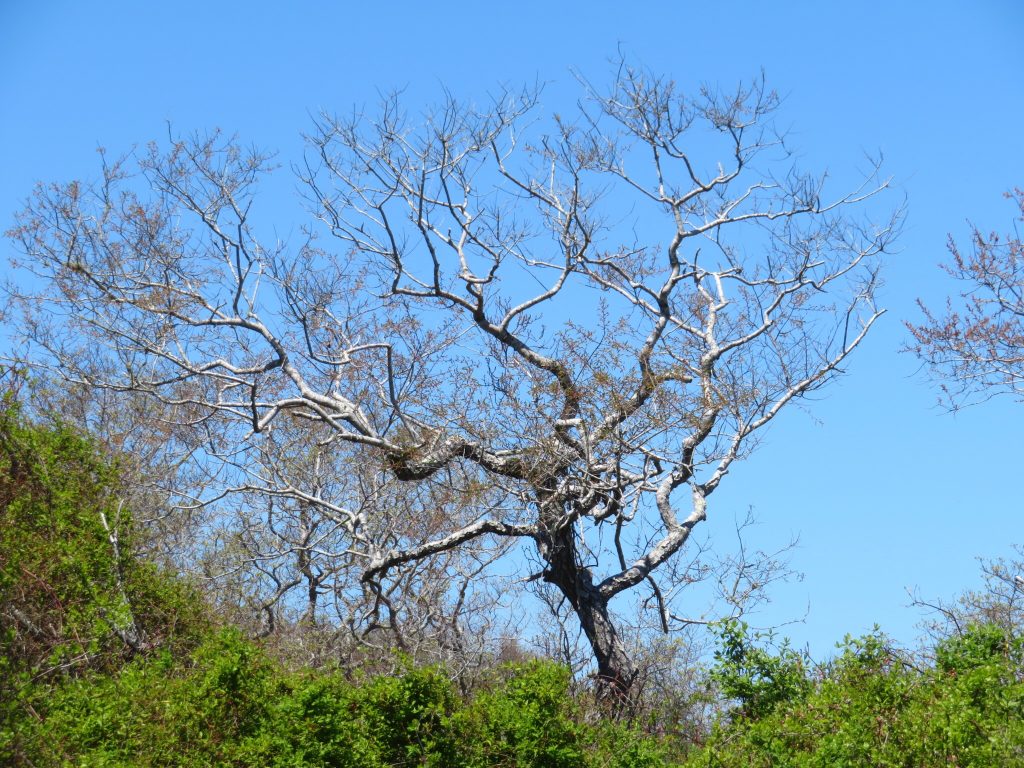
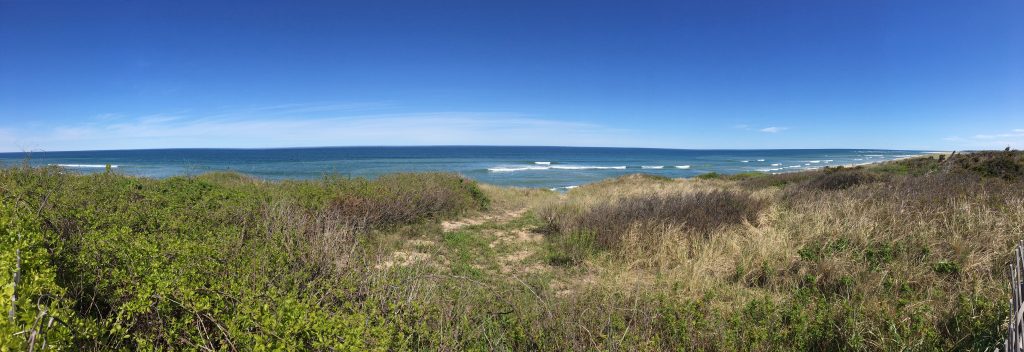
I don’t know if daffodils grow wild on Nantucket, or if someone planted them, but we saw them all along our bike ride—beautiful!
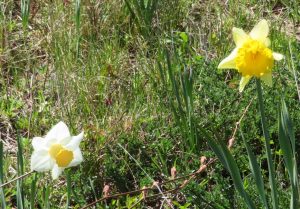
We had to race to get our return ferry (bringing back memories of the story of Cindy’s parents and brothers racing to catch the last ferry back to the family island in Washington in 1962 after visiting the Seattle World’s Fair). This wasn’t as dramatic as racing for the last ferry, but it was super nice of the guys at Steamship Authority to wait those extra two minutes for us!
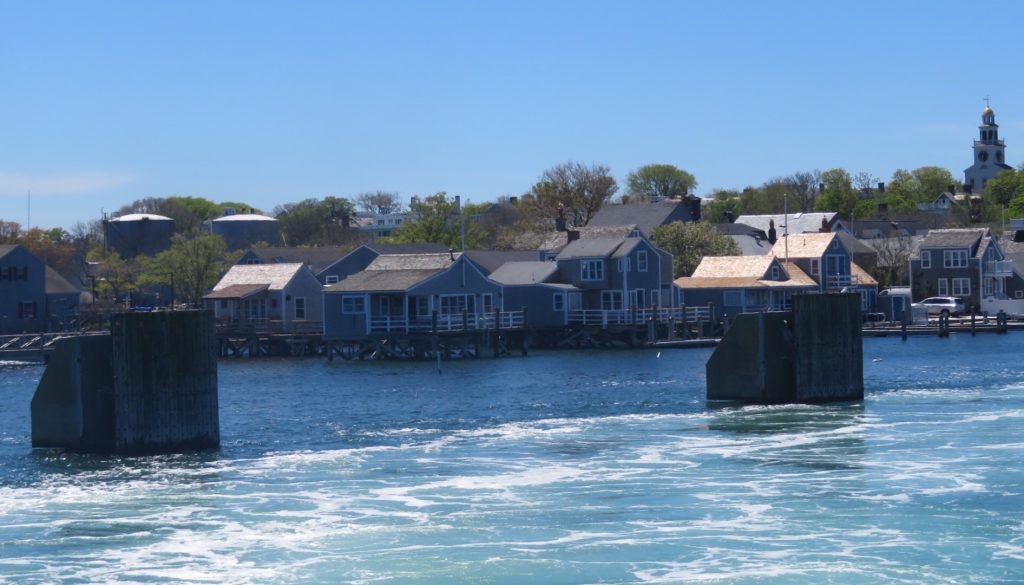
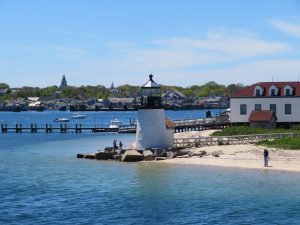
Ferry-riding, biking, and then a scenic drive along Cape Cod. We visited the Salt Pond Visitor Center at the Cape Cod National Seashore and got a great tip from the ranger regarding the bike path down to Salt Pond. Hopped on our bikes again and had a wonderful time watching horseshoe crabs, and lots of birds. Was this a Bonaparte’s Gull or a Murrelet? We do not know.
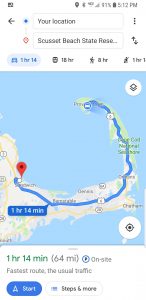
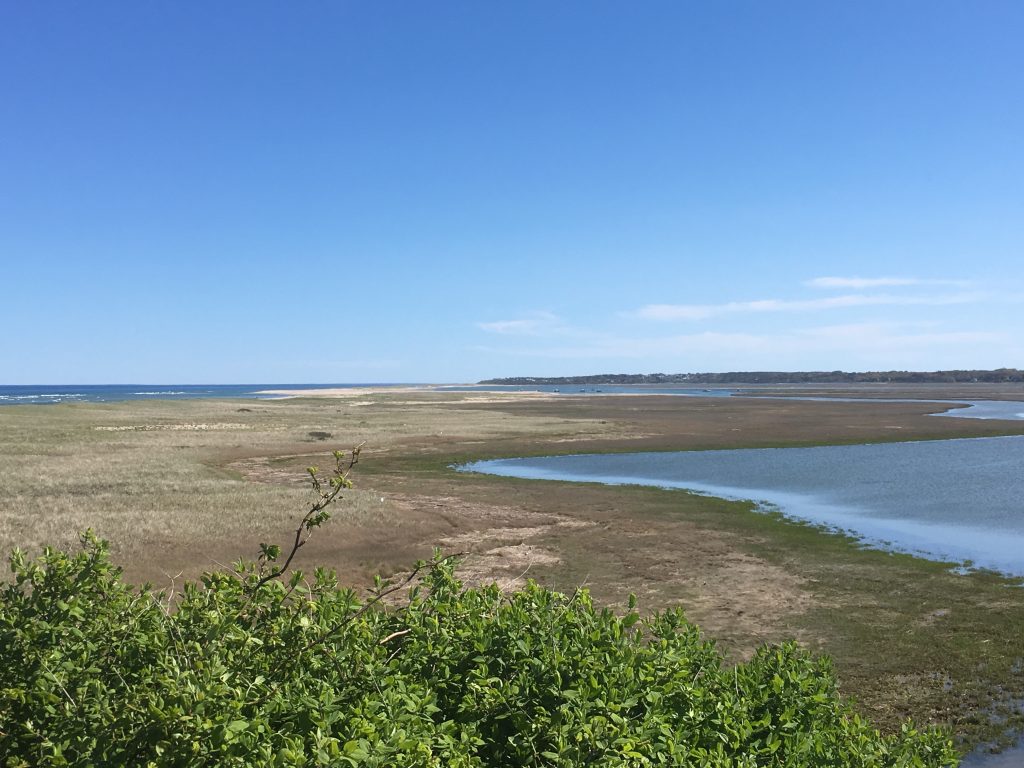
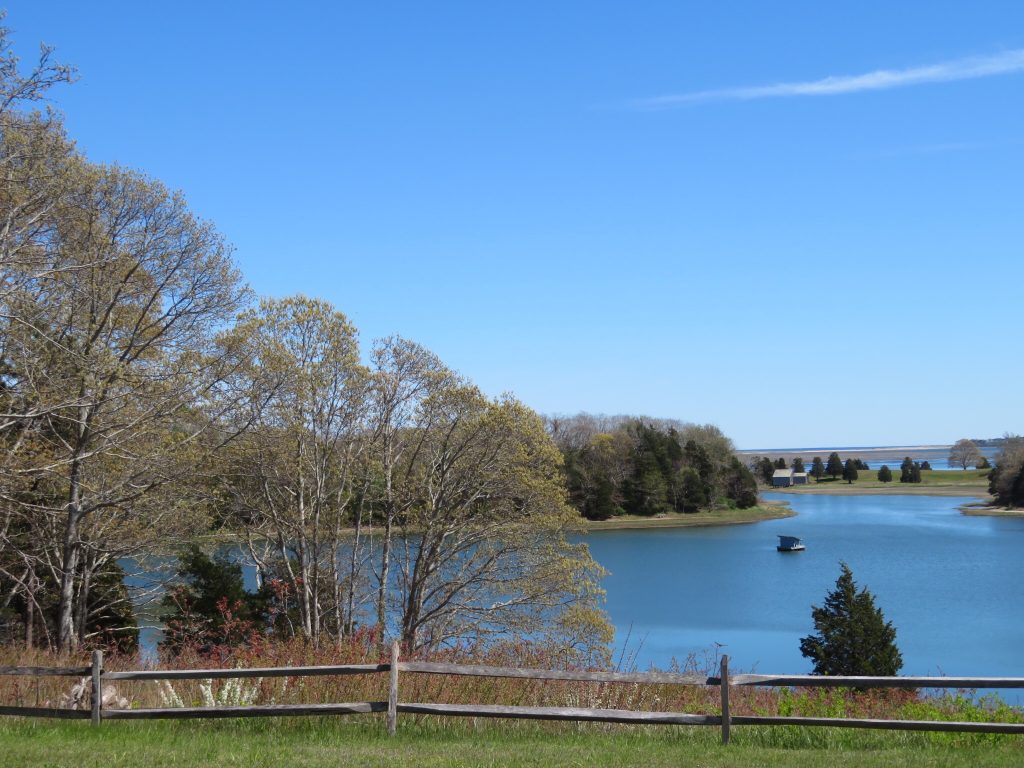
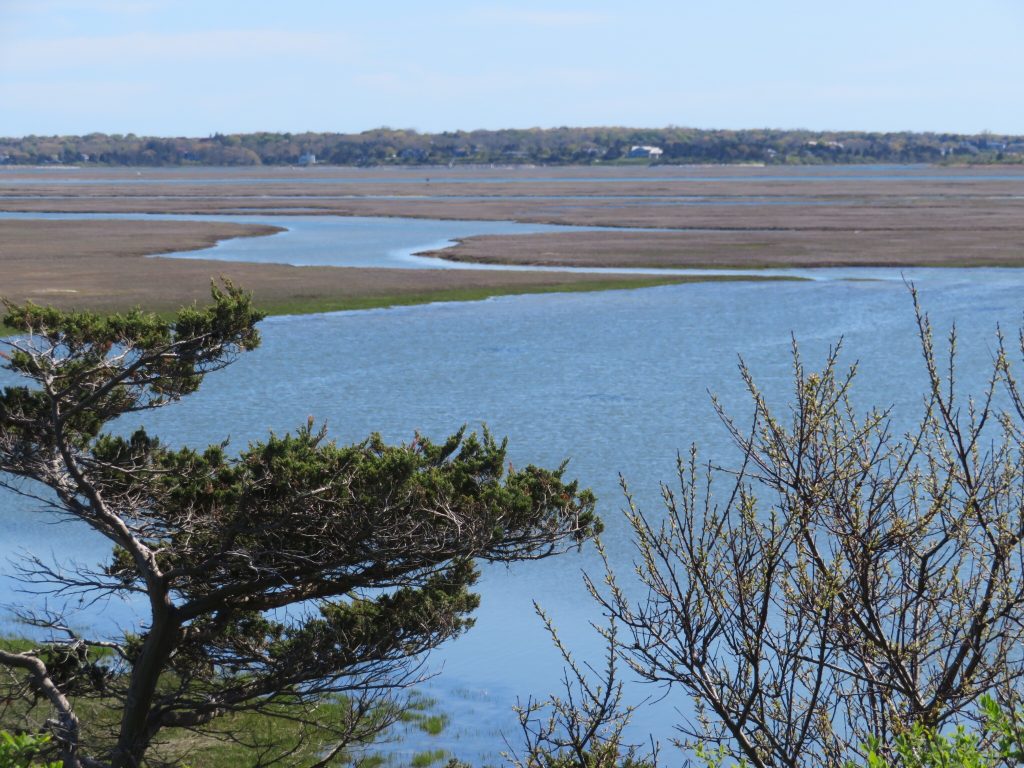
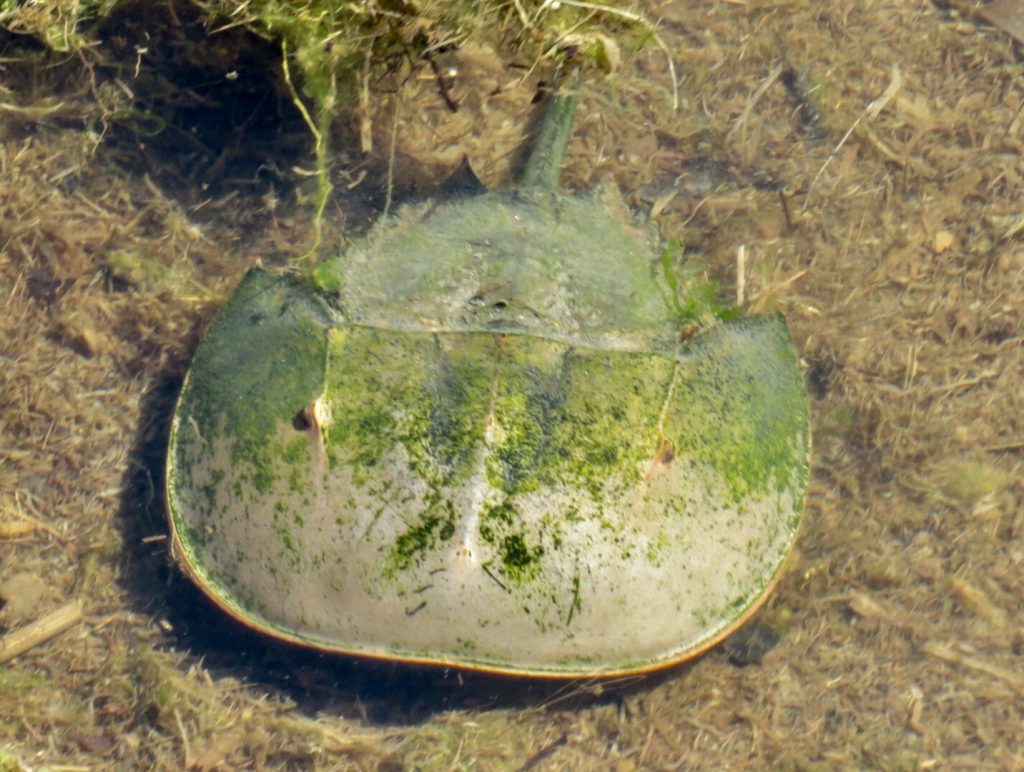
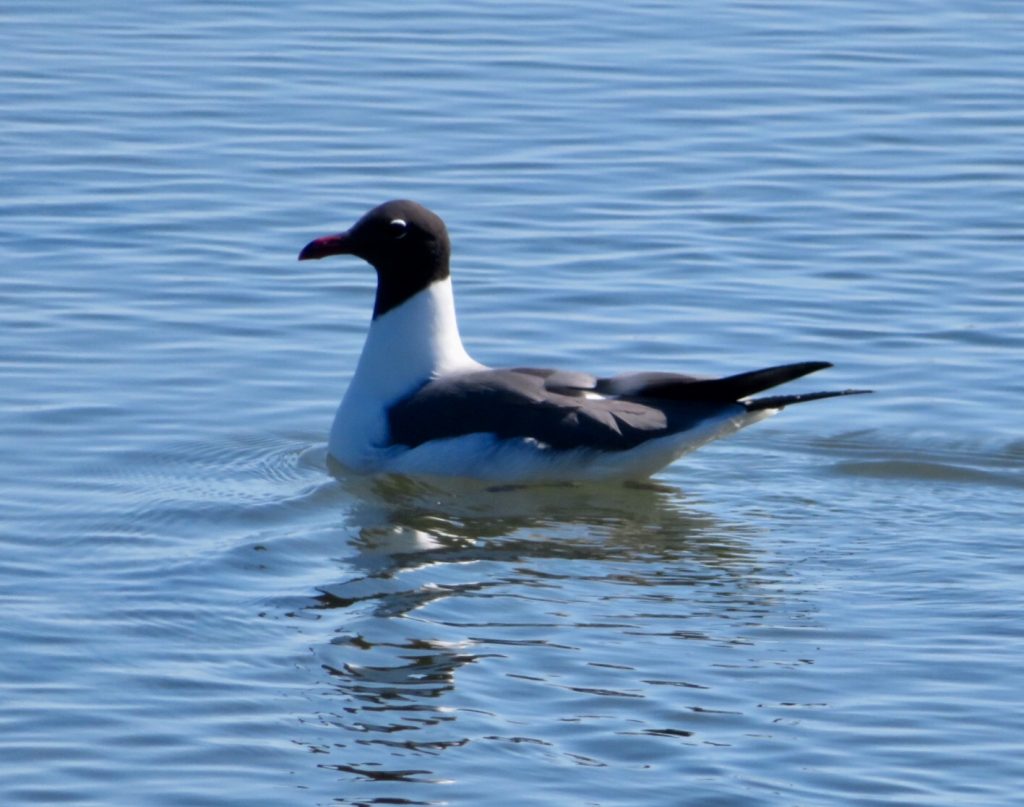
At the end of the road in Provincetown is a huge tower to memorialize the fact that the Pilgrims actually landed here first (not in Plymouth). They hung out on the Mayflower, drafting and signing the Mayflower Compact on this little peninsula before heading in to settle on the mainland in Plymouth.
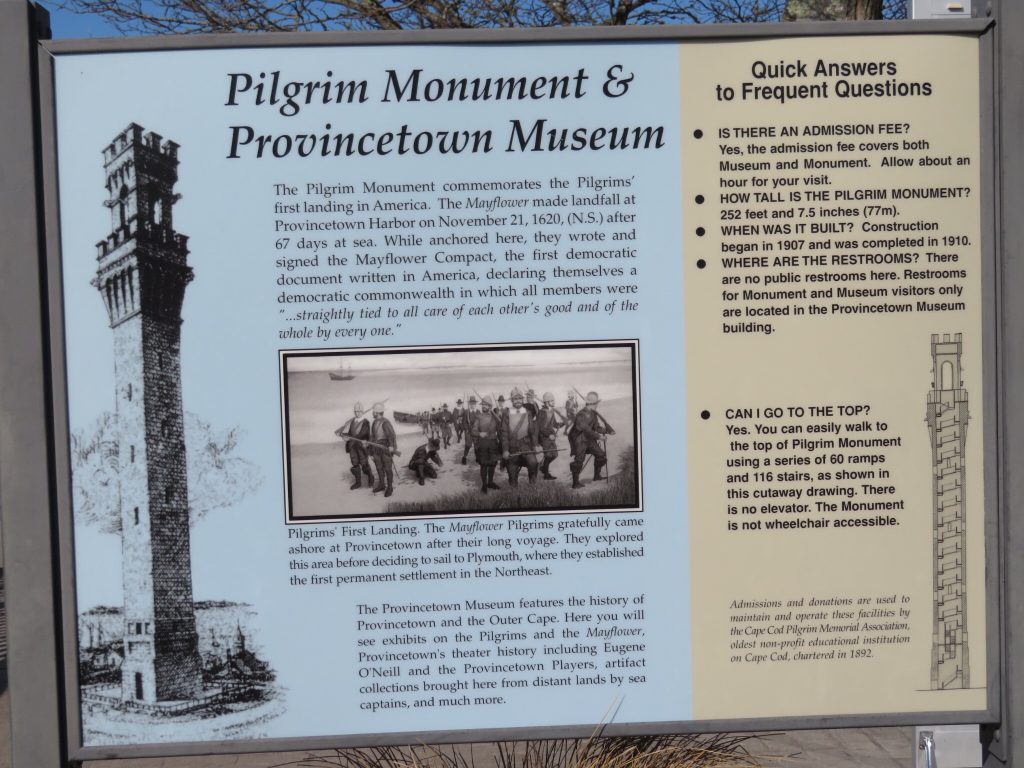
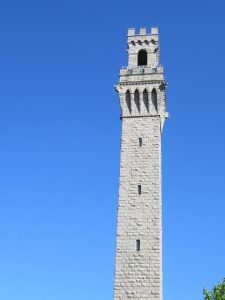
We celebrated the Pilgrims’ accomplishment and the end of our Cape Cod stay with a great lobster dinner at the Lobster Pot. Hank tackled his first lobster tails and claws and wondered if it was worth the effort. I was happy with my lobster grilled cheese sandwich! We’ll keep sampling the local cuisine to see whose lobster is best. Stay tuned!
